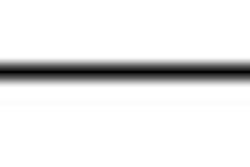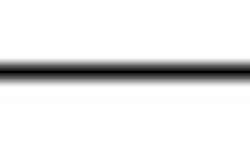
At the same time, the share of companies headquartered in emerging markets grew to more than one-quarter of the world's top companies, exerting significant influence on succession rates due to both their governance structures and fast growth rates. Also contributing to chief executive tenure is how closely involved headquarters is in operational decision making; CEOs who are more hands-on tend to exit office quicker, according to a new Booz & Company analysis.
The rate of CEOs forced from office fell to 2.2 percent globally in 2010, declining 36 percent from 2009 and the lowest rate of chief executive terminations since 2001. Planned departures declined by 1.4 percentage points to 7.7 percent. Last year, overall succession rates, which also include merger-driven departures, held stable in North America (11.1 percent) and increased in Japan (18.9 percent), while falling in Europe (10.2 percent) and the rest of Asia (also 10.2 percent).
Booz & Company's study of worldwide CEO succession patterns examines the degree, nature and geographic distribution of chief executive changes among the world's 2,500 largest public companies. This year's report, "CEO Succession 2010: The Four Types of CEOs," focuses on the role of the CEO and core senior management team, examining how they engage with the businesses they lead and the resulting effect on tenure and turnover. The report will be published in the summer 2011 edition of strategy+business, Booz & Company's quarterly thought-leadership magazine.
Among the report's key findings:
Asian economies are becoming the new center of gravity. China, Japan and the rest of Asia comprised the largest "bloc" in the world's top public companies, with 895 companies, versus North America's 772 companies and Europe's 618 companies. For the first time, almost half the top 2,500 are located outside North America and Western Europe, not only in the BRIC countries but in the "next 11" emerging nations. The number of companies from BRIC (Brazil, Russia, India and China) has grown 24 percent on average annually since 2000, while Chinese companies alone now account for one in five new companies in the world's top public companies.
China is a major, but not sole, reason for declining CEO exit rates. China's extremely low turnover rate (5.2 percent) — less than half the global average — is a major reason for 2010's turnover decline and could be attributed to its high degree of government ownership, even in public companies. That said, important factors other than China are keeping a higher proportion of CEOs in office, according to Ken Favaro, partner at Booz & Company. "Lingering recession aftereffects are encouraging companies to keep current leadership in place, and we've also seen improved CEO selection and succession practices. Further, given historically high rates of forced turnover, there are fewer CEOs to replace," Favaro said.
"Insider CEOs" rule the roost. CEOs promoted from within the company have historically produced superior returns for their shareholders, and last year the gap widened as insiders generated total shareholder returns on a regionally adjusted basis of 4.6 percent, compared with 0.1 percent produced by outsiders. Insiders also left office after an average 7.1 years, versus 4.3 years for outsiders. Among last year's 291 outgoing CEOs, 81 percent were insiders when they took the chief position.
CEO tenures have shortened over the past 10 years. Overall, CEO tenures were on average 18 months shorter in 2010 (6.6 years) compared to a decade ago (8.1 years). And the length of planned tenures, in which the CEO departs on a date prearranged in agreement with the board, has dropped by 30 percent over the last 10 years, from 10 to seven years.
Long-term trends in governance still hold. Boards increasingly separate the roles of chairman and CEO, especially in North America, where only 14 percent of incoming CEOs were assigned both titles in 2010, versus 52 percent in 2001. The practice of appointing an outgoing CEO as board chairman to apprentice the incoming CEO is growing in prevalence worldwide. This was the case 54 percent of the time in North America last year and accounted for two-thirds of the succession events in Japan, where it has long been the norm.
- Holding company. With a minimal degree of operational management, interacts like a portfolio manager and is interested in results, not how the results are generated.
- Strategic management company. Offers strategic guidance to its local businesses, but not the supervision of operational decision-making and finds value in linkages and synergies between loosely related business units.
- Active management company. Shares accountability with the business units for major operational decisions and adds value through close guidance and expertise.
- Operationally involved company. Sets the strategy for the company as a whole and gets involved in operational decision making for most or all business units.
These four corporate management models clearly influence the CEO's experience in office, according to Booz & Company.
CEOs at operationally involved companies have median tenures of 4.9 years, nearly 25 percent shorter than highly diversified holding companies (median 6.5 years). Strategic management and active management companies have median tenures of 5.3 and 5.0 years, respectively.
Operationally involved CEOs are more likely to depart in the first four years of their stint than holding company CEOs, at a rate of 36 percent and 17 percent, respectively. It's even tougher for operational CEOs who came into their companies as outsiders, with a median tenure of just 3.3 years, compared with 5.0 years for insiders. Most (57 percent) CEO dismissals at operationally involved companies are a result of disagreements with the board — far more than at any other type of company.
Merger and acquisition successions are the most prevalent for active management and operational involvement companies, occurring at 48 percent and 52 percent of companies, respectively.
"Incoming CEOs need to recognize that there are many factors contributing to the amount of time they'll have to be successful," said Gary Neilson, Booz & Company senior partner. "Particularly if they come in from the outside or run an operationally involved company, their time horizon to make an impact is much narrower than they might expect. Awareness of their corporate core model can help them lay the groundwork for success early, and perhaps prevent an unplanned exit."
Additional study findings:
- The energy sector saw the highest level of overall CEO turnover in 2010 at a rate of 16.3 percent, well above the global turnover rate. Materials and telecommunications followed at 14.8 percent and 13.9 percent, respectively. The lowest succession rates were in the consumer discretionary (7.2 percent) and consumer staples (7.7 percent) sectors.
- Energy companies also claimed the highest forced CEO turnover rate among the sectors studied at 6.2 percent, a sharp increase over 2009. Healthcare CEOs were also dismissed at a much higher rate than the prior year — from only 0.6 percent in 2009 to 4.2 percent last year.
- Conversely, financial services companies collectively saw among the sharpest decreases in forced departure rates, from 5.2 percent in 2009 to just 2.1 percent last year. Dismissals within the industrials sector also declined significantly to a rate of just 0.5 percent.
The Booz report can be found here.
This 2010 CEO Succession study identified the world's largest 2,500 largest public companies, defined by their market capitalizations (from Bloomberg) on January 1, 2010. To identify companies among the top 2,500 that had experienced a chief executive succession event, Booz & Company cross-checked data across a wide variety of printed and electronic multi-language sources. Additionally, the company conducted electronic searches for announcements of retirements or new appointments of chief executives, presidents, managing directors and chairmen during calendar year 2010. For a listing of companies that had been acquired or merged in 2010, Booz & Company used Bloomberg. Booz & Company also conducted supplemental research for regional CEO changes not identified by other sources. Total shareholder return was sourced from Bloomberg and includes reinvestment of dividends (if any). Total shareholder return data were then regionally market-adjusted and annualized. To distinguish between mature and emerging companies, Booz & Company followed the United Nations Development Program 2010 ranking.


















